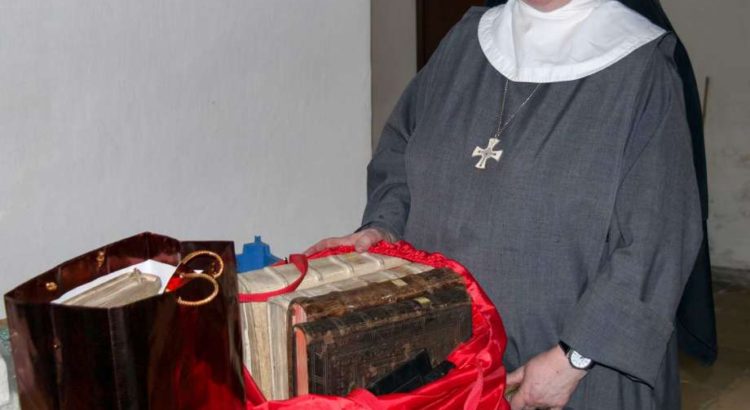América del Sur/Perú/24 Septiembre 2016/Autor: Pablo Pérez/Fuente: El país
Un programa de Acción Contra el Hambre recupera la deshidratación de sangre y vísceras de animales para compensar la falta de hierro en la dieta infantil
Cuando había matanza de un carnero en su casa, en la humilde comunidad indígena de Yanapampa, en los Andes peruanos, Maruja Orejón recogía la sangre y el pulmón y los cocinaba inmediatamente para elaborar algunos platos. Incluso invitaba a los vecinos para acabar rápidamente con el exquisito pero perecedero manjar. No sabía que esos alimentos eran, por su altísimo contenido en hierro, un potente antídoto contra la anemia que afecta a la mayoría de los niños de la región.
Y aunque lo hubiera sabido, no habría sido capaz de conservarlos para hacerlos parte de su dieta cotidiana, ya que ni siquiera tiene un frigorífico en su casa de adobe y rápidamente se hubiera echado a perder. Ignoraba que sus ancestros, ya en tiempos prehispánicos, tenían un método bien simple para que durase.
Hasta que la ONG internacional Acción Contra el Hambre implementó un programa contra la anemia en la zona y descubrió que algunas familias todavía lo practicaban, pero que era desconocido para la mayoría: salar las vísceras y deshidratarlas.
El charqui (que es como se denomina en quechua a la cecina) de carne es algo muy extendido en la mayoría de las regiones andinas de Perú, debido a la ausencia en las comunidades rurales de electrodomésticos para mantener fríos los alimentos. Lo que se había perdido, sin embargo, es el charqui de vísceras como el hígado, el bazo, el bofe (el pulmón de la vaca), el corazón o incluso la sangre, que deshidratada recibe el nombre de sangrecita.
Mediante la promoción de estos alimentos ricos en hierro, el programa Anemia no de Acción Contra el Hambre, que recientemente fue reconocido con el premio a la mejor iniciativa en promoción por la salud de la Fundación Mapfre, ha contribuido a que se reduzcan notablemente los niveles de esta condición de los niños de las 19 comunidades del departamento de Ayacucho (en el sur andino de Perú) en las que intervino.
Perú tiene una tasa de anemia en niños de entre seis y 36 meses de edad del 43,5% y el índice es todavía en zonas rurales (51,1%) y de mayor pobreza (50,4%), según datos oficiales. En zonas andinas, como Huamanguilla —donde se encuentra Yanapampa— y los otros tres distritos de la región de Ayacucho donde se llevó a cabo el proyecto es aún mayor debido a una dieta poco variada y baja en alimentos de origen animal (la mayor fuente de hierro), a base principalmente de patata, legumbres, trigo, maíz y verduras, y una serie de malos hábitos alimenticios e higiénicos.
Esto repercute en el desarrollo de los niños, pues los bajos niveles de hemoglobina en la sangre (la causa directa de la anemia) hace que sean propensos a enfermarse, poco activos, menos inteligentes y con dificultades para concentrarse y retener conocimientos en la escuela.
La promoción del charqui de sangrecita y de vísceras en coordinación con otros programas que fomentan hábitos como el lavado de manos, la estimulación temprana o cocinas más saludables (sin animales de corral, con extractores de humo…) han logrado reducir en Huamanguilla de un 74,3% a un 62,1% el índice e anemia. “Pero tenemos información más precisa de que hay familias que han desarrollado esta práctica, han recibido información de este tipo, y en ellas es un poco más notoria la disminución”, asegura Henry Torres, coordinador del proyecto.
En Yanapampa, en concreto, que es un pequeño grupo de casas, “cuando llegamos había cinco o seis niños con anemia y al final del proyecto, lo hemos dejado con dos, que son anemias leves”, especifica Lourdes Callañaupa, una enfermera que fue responsable de comunicación del programa.
Aunque la primera vez que los padres de las zonas andinas oyen hablar de anemia no entienden de qué se trata, pues no tiene unos síntomas claramente identificables, Maruja ha percibido en sus seis hijos la diferencia que ha supuesto la mejora en la dieta y en las prácticas de higiene para los más pequeños, beneficiados por programas como el de Acción Contra el Hambre.
“En la escuela mi hija mayor y el otro varón no captaban bien. Los chiquitos son más hábiles. Ahora han mejorado todos”, dice con orgullo. “Este”, afirma señalando a Roy, el más pequeño, “había nacido con menos de 2,5 kilos y era anémico cuando aparecieron las Chispitas (unas dosis diarias de micronutrientes repartidas en zonas pobres por los servicios de salud peruano) y la sangrecita”. El pequeño, de cinco años, se ve saludable, vivaz y lleno de energía, no para de jugar con sus hermanos.
La técnica de charqui de vísceras de sangre, que se practicaba en tiempos prehispánicos, se había perdido y las familias sólo consumían algunas de ellas frescas
“El otro día estuve viendo un desfile escolar y me dejó muy feliz porque vi que los niños son más hábiles y cada vez están terminando la educación primaria más chiquitos”, comenta Victoria Cárdenas. Antes, en Yanapampa, “los niños terminaban primaria con 15 o 16 años y ya no estudiaban secundaria porque tenían vergüenza, mientras que ahora con 12 años ya acaban”, añade.
“Nosotras, a pesar de ser adultas, como no hemos sido bien alimentadas de niñas, somos propensas y nos ponemos constantemente enfermos”, dice la mujer, de 45 años, mientras prepara charqui con la sangrecita de una gallina que acaba de sacrificar. La hierve en agua hasta que se forman grumos y se solidifican. Luego los pone en un plato, les echa sal, los tapa con una tela para protegerla de los mosquitos y deja el plato al sol sobre el techo metálico de un pequeño cobertizo que tiene entre la casa y el huerto para que se seque.
Los cinco hijos de Victoria son ya mayores (la menor tiene 13), pero ella se apuntó al proyecto de Anemia no para mejorar la alimentación de sus nietos. “Yo veo bastante cambio en mi nieta. Desde que le doy sangrecita, que tiene bastante hierro, ella está mejor. No conoce la anemia”. La niña, de dos años, come con avidez el charqui de hígado de cordero que le ha preparado su abuela, mientras ésta la mira con una sonrisa de oreja a oreja. “Es bien inteligente. Con dos años ya distingue los colores, sabe contar hasta cinco…”. Le muestra un vaso rojo y le pregunta: “¿Este qué color es, mamá?”. “Dojo”, le responde. Los niños de antes, recuerda, con dos años no podían casi ni ponerse de pie, ni hablar bien.
“Alimentándolos así estoy segura de que más adelante todos van a alcanzar una profesión, van a estar más sanos y más alegres”, sostiene. Los que todavía no están bien alimentados, lamenta, “cuando van a la escuela, están tristes, somnolientos, la profesora está hablando y no están atendiendo”.
En vez de llegar a Huamanguilla y los otros distritos ayacuchanos a imponer soluciones ideadas desde fuera, incluso aunque puedan haber tenido un buen resultado en otros lugares pero que son difíciles de sostener en el tiempo una vez terminada la intervención, Acción Contra el Hambre se propuso buscar remedios junto con la población local. Al sentirlos esta como propios, es más fácil que los interioricen y que los mantengan una vez que se termina el proyecto de cooperación.
“Incorporamos un componente cultural a este proyecto de manera más fuerte”, explica Torres. “Desarrollamos un trabajo con las familias en lo cultural para ver qué elementos podían mejorar los niveles de hemoglobina y, por ende, de anemia. Hubo personas viviendo con las familias y descubrieron que había un grupo de mujeres que tenía esta forma de deshidratar, no sólo la carne, sino las vísceras y la sangrecita”.
El programa Anemia noha enseñado a las mujeres a moler elcharqui de sangrecitapara hacer una harina con la que pueden hacer varias recetas, incluso postres
“Era un conocimiento ancestral, pero la mayoría lo perdió”, relata. “Puede ser por la introducción de nuevos patrones alimentarios, o porque no veían tanto la utilidad”. La única diferencia respecto a la elaboración delcharqui de carne es el tiempo de secado y la limpieza de las vísceras antes de darles un hervor.
Este enfoque cultural le ha permitido alcharqui de sangrecita superar algunos de los problemas que tienen las Chispitasque reparte el gobierno en sobres con dosis diarias. Estos micronutrientes en forma de polvo tiene un sabor fuerte que provoca el rechazo de algunos niños y algunos efectos secundarios, como diarreas, náuseas o estreñimiento. Además, algunas madres no tienen claro cómo deben incorporarlos a la comida.
Callañaupa recuerda que al principio algunos niños rechazaban el charqui por su textura y color. Pero en colaboración con las propias madres locales, Acción Contra el Hambre encontró la forma de molerlo y convertirlo en una harina fina que se puede añadir a cualquier alimento y elaboró una serie de variadas recetas adaptadas a los gustos autóctonos. “Ahora se pueden hacer preparaciones tanto en los segundos platos como en los postres y el niño no se da cuenta de que está comiendo la sangrecita”, indica la enfermera.
“Es un polvo muy fino y se agrega a los purés, a las sopas o a las papillas”, indica Torres, por lo que incluso se lo pueden dar a los bebés a partir de los seis meses, antes de que les salgan los dientes.
Maruja Orejón le pone harina de sangrecita a sus niños todas las mañanas en el desayuno. Si no lo añade a la avena, prepara con la licuadora un batido al que se la agrega. Pero su receta especial es la mazamorra de calabaza, un postre tradicional peruano a base de leche, canela y azúcar, con la sangrecita.
Marlene Yaranga, otra vecina de Yanapampa, utiliza por ejemplo el charqui de bofe para hacer uno de los platos más típicos de la zona, la chanfainita. Con ajo, pimiento, cebolla, pimentón, cacahuete molido, orégano, patata y zanahoria, elabora un consistente plato que su sobrina Damaris, de seis años, devora con fruición. Cuando acaba, su hermana Betsabé se lo da a su bebé de año y medio.
“Nosotros sólo comíamos fresco. Ahora ya constantemente les damos a nuestros hijos y sabemos que tiene mucho hierro”, señala Betsabé, que le dacharqui tanto de carne como de vísceras a sus niñas de tres a cuatro veces por semana.
“Normalmente a los niños les dábamos quinua, arveja, haba, trigo, papa… que sembramos aquí. De vez en cuando comprábamos carnecita, pero poca. La sangre se tiraba”, recuerda Betsabé.
Gracias al programa “ha mejorado bastante la alimentación”, celebra la mujer. “Ahora ya constantemente les damos charqui de vísceras a nuestros hijos y sabemos que tiene mucho hierro. A veces compro el mercado el charqui y poco a poco lo cocino para mis hijos, tres o cuatro veces a la semana. Si están frescas (las vísceras y la sangre) no se puede, porque empieza a oler feo, pero el charquise conserva más tiempo”.
Mujeres como Maruja, Victoria, Marlene y Betsabé se han convertido en mamás-líder del programa. Y aunque la ONG ya no está presente en el lugar, ellas se coordinan con el centro de salud de la zona para ir a enseñar a mujeres de otras localidades, e incluso de otros distritos, a utilizar el charqui para alimentar mejor a sus pequeños.
“Cuando he ido a hablar con otras madres, se sorprendían porque antes todas tiraban la sangre”, explica Victoria. “Ahora casi ya no tenemos anemia aquí. Nos organizamos y cuando está un niño con anemia vamos a visitarle y decirle a la familia cómo puede hacer”, añade Betsabé.
Fuente: http://elpais.com/elpais/2016/09/22/planeta_futuro/1474550665_668844.html














 Users Today : 40
Users Today : 40 Total Users : 35459946
Total Users : 35459946 Views Today : 46
Views Today : 46 Total views : 3418511
Total views : 3418511